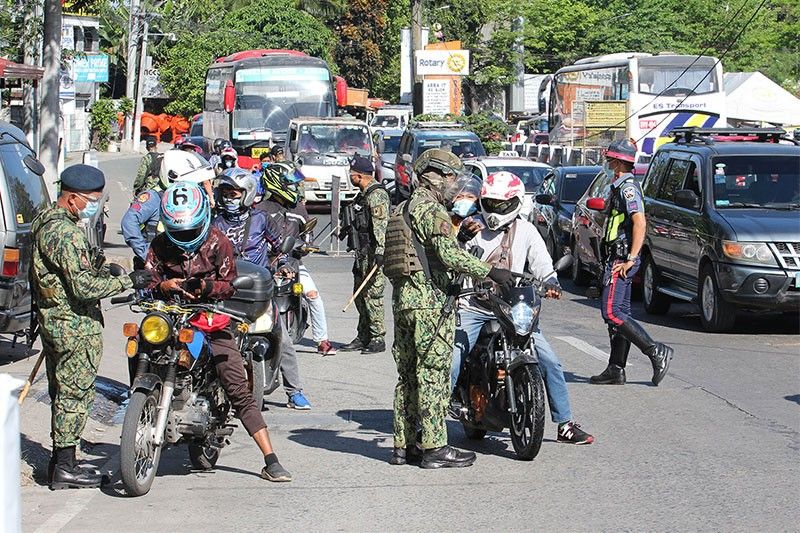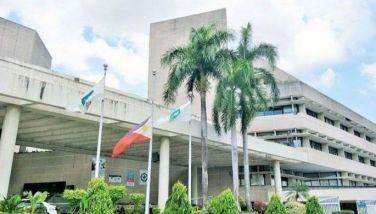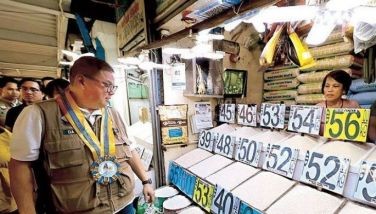NCR Plus shift to GCQ possible — Palace

MANILA, Philippines — The easing of quarantine restriction in Metro Manila and the nearby provinces of Bulacan, Cavite, Laguna, and Rizal is possible because of improved healthcare capacity and the slower transmission of COVID-19, Malacañang said on Monday.
The capital region and the four provinces — collectively known as National Capital Region (NCR) plus - has been under modified enhanced community quarantine (MECQ), the second strictest classification, since April 12.
The classification of the area, which contributes about half of the Philippines' economic output, will lapse on May 14 but it can be extended, depending on factors like the number of infections and the available health facilities. Mobility and social gatherings remain restricted and only selected businesses are allowed to open in MECQ areas.
Presidential spokesman Harry Roque said while the government's pandemic task force has not made a decision on the classifications, a downgrade of the status of NCR plus is a possibility based on the formula being followed.
"We cannot preempt the IATF. But if we are to follow the formula, there is a possibility," Roque said at a press briefing when asked about the possibility of NCR plus shifting to general community quarantine after May 14.
"Again, the final decision rests with the IATF," he added.
Roque said as of May 9, about 68% of intensive care unit (ICU) beds in Metro Manila are occupied, lower than the 70% utilization rate recorded in the past few weeks. About 46% of isolation beds, 51% of ward beds, and 51% of ventilators in the capital region are also in use. For the entire Philippines, the health care utilization rate is 62% for ICU beds, 44% for isolation beds, 49% for ward beds, and 42% for ventilators.
Active cases totaled 61,294 while the number of deaths hit 18,472 as of May 9.
"The number of our active COVID is going down. Let us not squander this and the improvement of our hospital utilization rate," Roque said.
"Our health care utilization rate is now under moderate (risk). Our attack rate is going down, our R naught (reproduction rate) is less than one. What is important is we achieve total health. If we just prevent sickness or death caused by COVID, it is possible that more people would suffer because of poverty while the economy is closed," he added.
Roque said President Rodrigo Duterte is expected to deliver a public address from Davao City on Monday night but he is not likely to announce the updated classifications because the IATF has yet to meet to discuss its recommendation.
Three provinces placed under MECQ
In a related development, the IATF has placed three areas under MECQ for two weeks.
The provinces of Cagayan, Apayao, and Benguet will be under MECQ from May 10 to May 23, according to IATF Resolution No. 114-C issued last Sunday.
Baguio City is not covered by the resolution.
"The risk-level classifications of the aforementioned provinces shall be without prejudice to their reclassification as may be warranted and the declaration of localized enhanced community quarantine in critical areas," the resolution read.
Other areas that are under MECQ are Quirino, Abra, Ifugao, Santiago City in Isabela, and Zamboanga City.
Roque also maintained that the IATF does not make decisions based on the recommendation of the OCTA research group, which has been issuing reports about the pandemic in the Philippines.
"We respect the recommendation of OCTA. But not even once did we make our decision based on the recommendation of OCTA. Their data also came from the DOH (Department of Health). All the decisions of IATF are made upon recommendation of experts who are with the IATF, including experts who are with the DOH," the Palace spokesman said.
"I repeat, many thanks to OCTA Research for the recommendation but the truth is we are listening to the experts of DOH. We hope you will understand it because it's not just the DOH that is giving recommendation. It's an entire government approach," he added.
- Latest
- Trending































